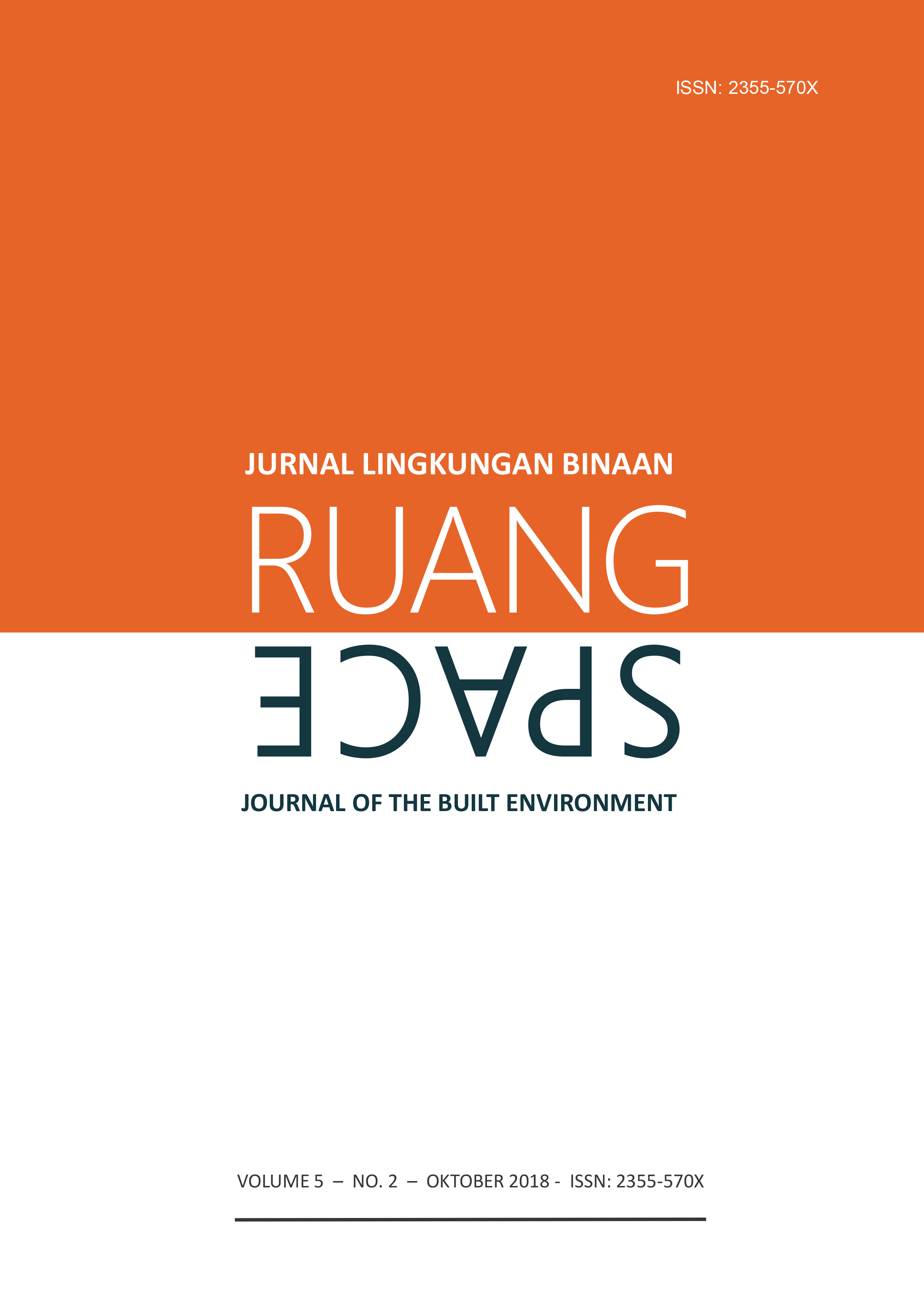Editorial: Pelestarian Elemen Keruangan dan Pembangunan Identitas Kota
Abstract
In Ruang we address issues of form and urban space, leaving the economists to ponder the larger issues of democracy and equality in a rapidly fracturing social environment. This raises the problematic of urban form, its representations, symbolism and practices. The conservation of traditional values and norms imply the conservation of those environments that support them. Since conservation means retaining building form without its prior content, the actual fabric and processes of urban conservation are also thrown into the market place. Conservation on any scale also threatens the urban land market since large areas are then removed from trading (or is all history up for sale?) So do we proceed with adaptation, regulated change, conservation or sterilisation (preservation)?
Today the identity of a place is not merely about localities, but is, in many occasions, more about image making to support the creation of a modern urban living environment. Over the last forty years, the use of iconic buildings to generate capital has become more and more frequent, from Sydney Opera House and the Pompidou Centre, to the new Guggenheim Bilbao. These are iconic structures whose prime function is not to give identity to neighbourhoods, but to source capital through tourism and to boost local industry. Here there is a crossover from high technology to local icons. For example Frank Gehry used technology from the American space program to design shapes and forms, as well as technology focussed on the properties of materials. But such buildings fall again into the arena of capital rather than community development. So what is happening on the other side of the coin?
There is no doubt that social change is also accelerating in many countries and it is also clear that where we cannot hold capital accumulation and globalisation accountable for many adaptations from gender equality, new housing forms based on the disintegration of the nuclear family, the idea of a universal wage to counter automation, the generation of new communities that wish to live ‘off the grid’, and a phenomenon we might call ‘micro-communities of resistance’ to state neo-corporatism and the abuse of technology.
At the level of design and urban form, the Charter of the New Urbanism, now sweeping Europe, and North America, with intrusions in Malaysia, China and other countries appears to have merit. Its agenda is community based planning and design, using a process of natural selection to generate urban density, with urban and architectural forms that reflect history and proven value in use. While the New Urbanism is theoretically weak, it sources two major thinkers namely Patrick Geddes and Ian McHarg, who were both concerned with the relationship between the natural environment and human habitation. Importantly, the New Urbanism deals with the tricky problem of transformation that links past formal languages with new uses. Something that we can all learn from.
Downloads
The copyright of the received article shall be assigned to the journal as the publisher of the journal. The intended copyright includes the right to publish the article in various forms (including reprints). The journal maintains the publishing rights to the published articles.



